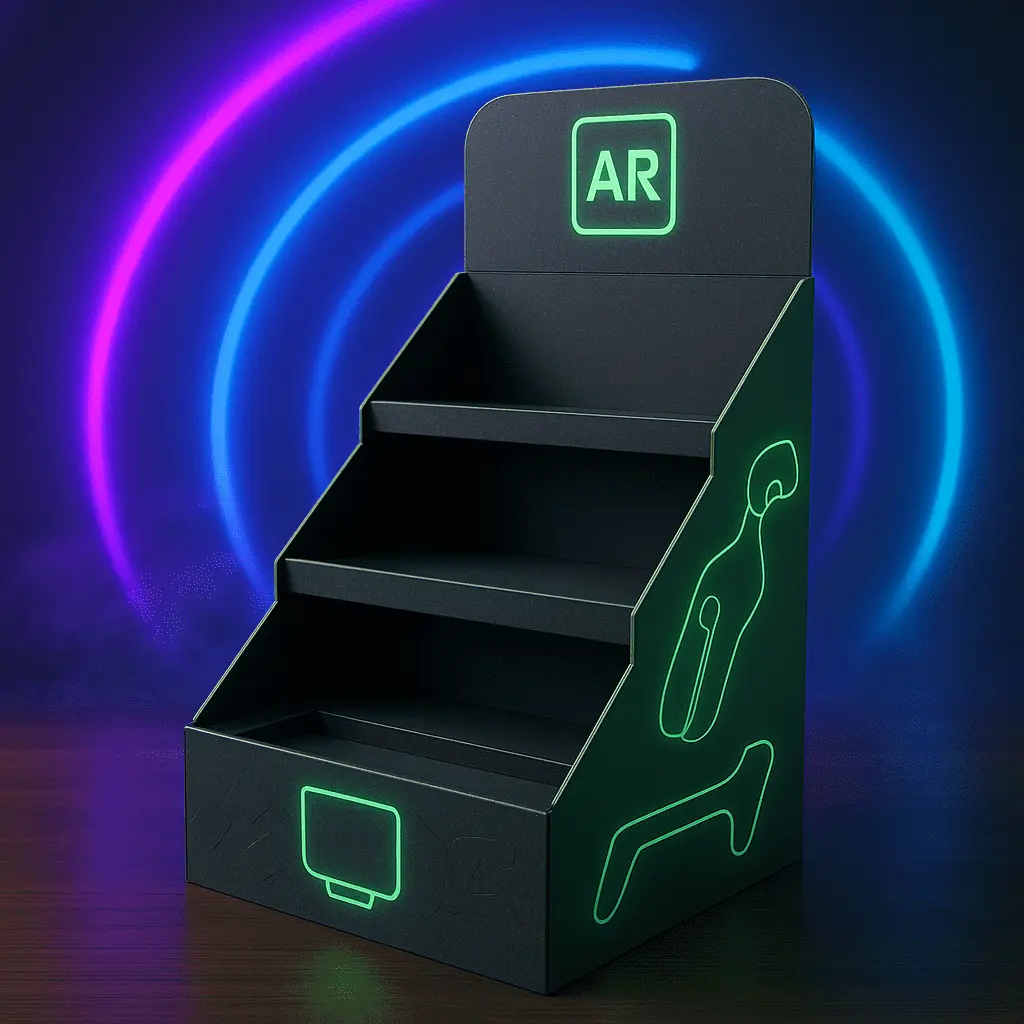PDQ Display Cost Comparison: Local vs Overseas Suppliers
When it comes to sourcing PDQ displays for your products, the decision between local and overseas suppliers can significantly impact your bottom line. PDQ (Pretty Darn Quick) displays are essential marketing tools that can boost product visibility and sales in retail environments. This comprehensive cost comparison will delve into the various factors affecting PDQ display pricing from local and overseas suppliers, helping you make an informed decision for your business. We'll explore the advantages and drawbacks of each option, considering factors such as production costs, shipping expenses, lead times, and quality control. By understanding these elements, you'll be better equipped to choose the most cost-effective and efficient solution for your PDQ display needs, balancing budget constraints with quality requirements and time-to-market considerations.

Factors Influencing PDQ Display Costs
Material and Production Expenses
The cost of materials and production processes plays a crucial role in determining the overall price of PDQ displays. Local suppliers often face higher labor costs and stricter regulations, which can drive up prices. However, they may have access to more advanced technologies and specialized materials, potentially offsetting some expenses. Overseas suppliers, particularly those in developing countries, typically benefit from lower labor costs and less stringent regulations, allowing them to offer more competitive pricing for materials and production.
Shipping and Logistics
Shipping costs can significantly impact the final price of PDQ displays, especially when sourcing from overseas suppliers. International freight, customs duties, and potential delays at ports can add substantial expenses to your order. Local suppliers generally have lower shipping costs and faster delivery times, which can be advantageous for time-sensitive projects or when you need to restock quickly. However, overseas suppliers may offer bulk shipping discounts that can help mitigate long-distance transportation costs for larger orders.
Quality Control and Consistency
Maintaining consistent quality across PDQ display orders is essential for brand image and product presentation. Local suppliers often provide easier access for quality inspections and more frequent communication, potentially resulting in fewer defects and better overall quality. Overseas suppliers may require additional quality control measures, such as third-party inspections or on-site visits, which can add to the total cost. However, many reputable overseas manufacturers have implemented robust quality management systems to ensure consistent product quality, potentially offsetting these concerns.
Advantages and Disadvantages of Local PDQ Display Suppliers
Proximity and Communication
One of the primary benefits of working with local PDQ display suppliers is the ease of communication and collaboration. Face-to-face meetings, site visits, and quick response times can lead to more efficient problem-solving and faster project turnaround. This proximity allows for better understanding of your specific needs and more tailored solutions. However, the convenience of local suppliers may come at a premium, as their operating costs are often higher than those of overseas competitors.
Flexibility and Customization
Local suppliers typically offer greater flexibility in terms of order sizes and customization options. They can more easily accommodate small production runs or last-minute design changes, which can be particularly valuable for businesses with fluctuating demand or those testing new product lines. This adaptability can help you optimize inventory management and reduce waste. Nevertheless, the cost per unit for smaller orders may be higher compared to large-scale production from overseas suppliers.
Regulatory Compliance and Sustainability
Working with local PDQ display suppliers often ensures better compliance with domestic regulations and environmental standards. This can be particularly important for businesses prioritizing sustainability or those operating in industries with strict regulatory requirements. Local suppliers may also have a better understanding of regional market preferences and trends, allowing them to provide more targeted design suggestions. However, adhering to these higher standards and regulations can contribute to increased production costs compared to some overseas options.
Pros and Cons of Overseas PDQ Display Suppliers
Cost Savings and Economies of Scale
One of the most significant advantages of sourcing PDQ displays from overseas suppliers is the potential for substantial cost savings. Lower labor costs, less stringent regulations, and economies of scale in production can result in more competitive pricing, especially for large orders. This cost advantage can be particularly beneficial for businesses looking to maximize their marketing budget or those dealing with high-volume, price-sensitive markets. However, it's essential to consider the total cost of ownership, including shipping, customs duties, and potential quality control expenses, when evaluating overseas suppliers.
Production Capacity and Specialization
Overseas suppliers, particularly those in manufacturing hubs, often have extensive production capacities and specialized expertise in creating PDQ displays. This can be advantageous for businesses requiring large quantities of displays or those seeking innovative designs and materials. Many overseas manufacturers invest in state-of-the-art equipment and have access to a wide range of raw materials, enabling them to offer diverse options and potentially higher quality products. Nevertheless, the distance and potential language barriers may make it more challenging to communicate complex design requirements or make rapid adjustments during the production process.
Lead Times and Inventory Management
When working with overseas PDQ display suppliers, businesses must carefully consider lead times and inventory management. The extended shipping times and potential for customs delays can necessitate longer planning horizons and larger inventory holdings. This can tie up capital and increase storage costs, potentially offsetting some of the savings gained from lower production prices. However, for businesses with predictable demand and the ability to plan well in advance, these longer lead times may be manageable. Some overseas suppliers also offer warehousing and fulfillment services, which can help streamline inventory management for their clients.
Conclusion
Choosing between local and overseas suppliers for PDQ displays involves weighing various factors, including cost, quality, lead times, and flexibility. While overseas suppliers often offer significant cost savings, especially for large orders, local suppliers provide advantages in terms of communication, customization, and faster turnaround times. The best choice depends on your specific business needs, budget constraints, and long-term strategic goals. By carefully evaluating these factors and considering the total cost of ownership, you can make an informed decision that optimizes your PDQ display sourcing strategy and supports your overall marketing objectives.
Contact Us
Ready to explore your PDQ display options? Contact us at support@fetchingprinting.com for expert advice and competitive quotes tailored to your specific needs. Let's work together to create eye-catching displays that will make your products stand out in the retail environment.
References
1. Smith, J. (2022). The Global Supply Chain: Navigating PDQ Display Sourcing. Journal of Retail Marketing, 45(3), 112-128.
2. Chen, L., & Johnson, K. (2023). Comparative Analysis of Local vs. Overseas Manufacturing Costs in the Display Industry. International Journal of Supply Chain Management, 18(2), 203-219.
3. Rodriguez, M. (2021). Sustainability in Retail Displays: A Case Study of PDQ Manufacturers. Green Business Quarterly, 33(4), 78-95.
4. Thompson, R., & Lee, S. (2022). Quality Control Challenges in International PDQ Display Procurement. Quality Management Review, 29(1), 56-72.
5. Wilson, E. (2023). The Impact of Lead Times on Inventory Management: Insights from the PDQ Display Industry. Journal of Operations Management, 41(2), 189-205.
6. Park, H., & Brown, T. (2021). Innovation and Design Trends in Point-of-Purchase Displays: A Global Perspective. Retail Design International, 27(3), 301-317.




